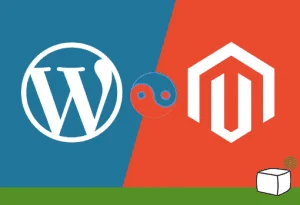Let’s know some general information about HTML history
The journey of HTML history is one of innovation, creativity, and transformation. HTML, short for HyperText Markup Language, stands as the backbone of the modern web — the universal code that brings every webpage to life.
Understanding its evolution allows us to appreciate how far technology has come and how simple text-based markup became the foundation of an entire digital ecosystem.
If you’re curious about how HTML continues to evolve, you can check this insightful article on the HTML sitemap generator, which explains one of HTML’s most practical uses in web organization and navigation.

The Beginning of HTML History — Tim Berners-Lee’s Groundbreaking Idea
The story of HTML history starts in 1989 at CERN, when Sir Tim Berners-Lee, a visionary British computer scientist, wanted to create a way to share information across computers. His revolutionary concept gave birth to the World Wide Web.
Key Milestones of the Early Years:
1989: Berners-Lee proposed a system using hypertext to share documents between researchers.
1990: He developed the first HTML language, HTTP protocol, and browser-editor — the foundations of the web.
1991: The first HTML specification was published, containing 18 basic tags only.
1993: The release of the Mosaic browser made web pages accessible to the public.
Why It Was Revolutionary:
It allowed text, images, and links to exist in one unified system.
It connected information globally, creating the first interconnected digital network.
It made content interactive, transforming reading into exploration.
In these early stages, the internet evolved from a research tool to a global communication platform — all powered by HTML’s simple yet powerful structure.
Thus began the remarkable HTML history, setting the stage for every technological leap that followed.
Read also: How to Get a High-Paying Remote Full-Stack Developer Job
HTML 2.0 to 4.01 — The Era of Standardization and Expansion
As the web exploded in popularity during the mid-1990s, HTML needed to mature. This period was about bringing consistency and structure to the rapidly growing web ecosystem.
HTML 2.0 (1995): The First Official Standard
Developed by the Internet Engineering Task Force (IETF).
Ensured compatibility across different browsers.
Introduced forms, tables, and text formatting elements.
HTML 3.2 and 4.01 (1997–1999): Growth and Design Innovation
HTML became more visual — adding tables, frames, and improved layout options.
Web design started moving from plain text to interactive, multimedia content.
Developers began combining HTML with CSS and JavaScript, leading to dynamic websites.
However, the late 1990s also brought the “Browser Wars” between Netscape and Microsoft. Each company added unique features to their browsers, creating incompatibility issues for developers.
This challenge led to the creation of the World Wide Web Consortium (W3C) — the organization responsible for maintaining and standardizing HTML specifications.
For a modern perspective on optimizing web performance with HTML, check this guide on how to add AMP to your website step by step. It shows how HTML now powers faster, mobile-friendly web experiences.
Key Achievements of the Standardization Era:
Unified HTML syntax across browsers.
Integration with CSS for design separation.
Early focus on web accessibility and semantic markup.
This period not only shaped the technical side of HTML but also influenced how web developers approach design and content structure even today.
The Arrival of HTML5 — A Revolution in Web Development
When HTML5 was officially introduced in 2014, it completely redefined what the web could do. It wasn’t just another update — it was a revolution in functionality, structure, and creativity.
Major Features Introduced in HTML5:
Multimedia support: <video> and <audio> tags allowed playing media without plugins like Flash.
Graphics and animation: The <canvas> element empowered developers to create dynamic visuals and games.
Semantic tags: Elements like <header>, <footer>, <article>, and <section> improved readability and SEO.
APIs: New Application Programming Interfaces brought advanced features like offline storage, geolocation, and drag-and-drop.
Why HTML5 Changed Everything:
Unified web standards across desktop and mobile devices.
Enabled responsive web design that adapts to any screen size.
Reduced dependency on external software for multimedia content.
Enhanced SEO visibility through semantic structure.
You can also explore how proper HTML structure helps in SEO by reading the Sitemap function and how to create a sitemap for your site. It explains how HTML’s logical hierarchy assists search engines in crawling websites efficiently.
Legacy of HTML5 in HTML History
It made web development simpler, faster, and more powerful.
It bridged the gap between apps and websites, allowing hybrid platforms.
It continues to evolve with W3C and WHATWG, keeping HTML relevant in modern digital ecosystems.
The evolution of HTML5 marked a new era — one where web pages became applications, and users experienced a seamless digital universe built entirely on the principles of HTML history.
Modern Applications of HTML (2020–2025)
Over the last five years, the HTML history narrative has entered an era of transformation. The web has shifted from being static to dynamic, data-driven, and interactive — and HTML remains at the heart of it all.
Key Modern Uses of HTML:
Progressive Web Apps (PWAs): HTML5 provides the foundation for PWAs, offering users an app-like experience without downloading from stores.
Web Components: Developers can now create reusable, modular HTML elements that enhance scalability and consistency across large projects.
Responsive Design: With CSS3 and HTML5 combined, websites now automatically adapt to any screen size — a vital part of mobile-first indexing by Google.
Accessibility (a11y): The modern web uses ARIA (Accessible Rich Internet Applications) attributes within HTML to make sites more inclusive for users with disabilities.
How HTML Integrates with Emerging Technologies
AI and Machine Learning: Web developers embed AI-powered scripts within HTML pages, enabling features like chatbots and smart recommendations.
Voice Search and Assistants: HTML structure ensures better indexing for voice search results by defining clear semantic meaning.
Why HTML Still Dominates
It’s lightweight, universal, and runs in every browser.
It seamlessly connects with CSS, JavaScript, and databases.
It forms the skeleton of every online interface — from blogs to billion-dollar apps.
Even with new frameworks like React and Vue.js, HTML history reminds us that every digital experience still starts with <html>, <head>, and <body>.
The Future of HTML — Innovation, AI, and Semantic Intelligence
As we look to the future, HTML continues to evolve into something smarter — not just readable by browsers, but understandable by machines.
Trends Shaping the Future of HTML:
1. Semantic Web & AI Integration
The semantic web aims to make content more meaningful, allowing AI systems to interpret page context more accurately.
HTML will work alongside schema markup to help search engines identify relationships between data and provide richer results.
2. Extended HTML APIs
New APIs will enable 3D rendering, virtual reality experiences, and augmented web interfaces.
Developers are already experimenting with WebXR and WebGPU, which combine HTML with advanced graphics.
3. Accessibility & Automation
HTML’s future is accessibility-first. With ARIA and better semantic design, every user — regardless of ability — can enjoy the same experience.
Automation tools powered by AI will soon generate optimized HTML code automatically, improving site performance and reducing human error.
4. Sustainability & Green Coding
With environmental awareness rising, developers are focusing on energy-efficient HTML design — reducing script load, image sizes, and carbon footprint through optimized code.
Lessons from HTML History — Why It Still Matters Today
In an age of AI, cloud computing, and quantum networking, one might ask: “Why does HTML still matter?” The answer lies in its universality and resilience.
Core Lessons from HTML History:
Simplicity Is Power: HTML’s minimal structure made it accessible to everyone — from novice bloggers to expert engineers.
Adaptability Drives Longevity: From static pages to streaming apps, HTML evolved without losing backward compatibility.
Open Standards Encourage Innovation: HTML’s open-source philosophy inspired millions of developers to build freely and collaboratively.
Practical Impact of HTML in 2025
Every framework — React, Angular, or Vue — still compiles down to HTML.
Every SEO strategy begins with clean, structured HTML code.
Every digital interaction — from submitting a form to watching a video — depends on HTML.
In essence, the HTML history narrative continues to grow — not as a memory of the past, but as a living framework shaping our digital reality.

Frequently Asked Questions About HTML History
1. What is HTML, and who created it?
HTML stands for HyperText Markup Language. It was invented by Tim Berners-Lee in 1989 while working at CERN to share documents online.
2. Why is HTML history important to web developers?
It shows how the web evolved and why best practices like semantic markup and accessibility are essential for modern web design.
3. What was the first version of HTML?
The first version, created in 1991, included just 18 tags — including <p>, <h1>, <a>, and <img>.
4. What are the main differences between HTML 4 and HTML5?
HTML5 added new semantic elements (<article>, <section>), native multimedia support, and APIs for offline storage and dynamic rendering.
5. How does HTML impact SEO?
Proper HTML structure helps search engines index and understand content, improving visibility and ranking potential.
6. How often does HTML get updated?
HTML evolves continuously under two major organizations — W3C and WHATWG — ensuring compatibility and innovation.
7. Can HTML work without CSS or JavaScript?
Yes, but it would produce only basic, unstyled content. CSS and JavaScript enhance the appearance and interactivity of HTML pages.
8. What is the role of semantic HTML today?
Semantic HTML provides meaning to web elements, helping both users and search engines understand the page’s purpose more accurately.
9. Is HTML still relevant in 2025?
Absolutely. Every digital application still depends on HTML as the foundation of user interface structure and accessibility.
10. Where can I learn more about HTML structure and optimization?
You can explore detailed tutorials on websites like eHelperTeam, where guides such as HTML Sitemap Generator and Sitemap Function explain real-world HTML usage.
Conclusion
The story of HTML history is more than just a timeline — it’s a testament to human creativity and the power of simplicity. From Tim Berners-Lee’s first idea at CERN to the complex, AI-driven websites of 2025, HTML remains the language of connection.
Every click, image, and interaction you see online stems from those humble <tags> that changed the world.
And as technology keeps advancing, one thing is certain: HTML’s story is far from over — it’s evolving faster than ever.






